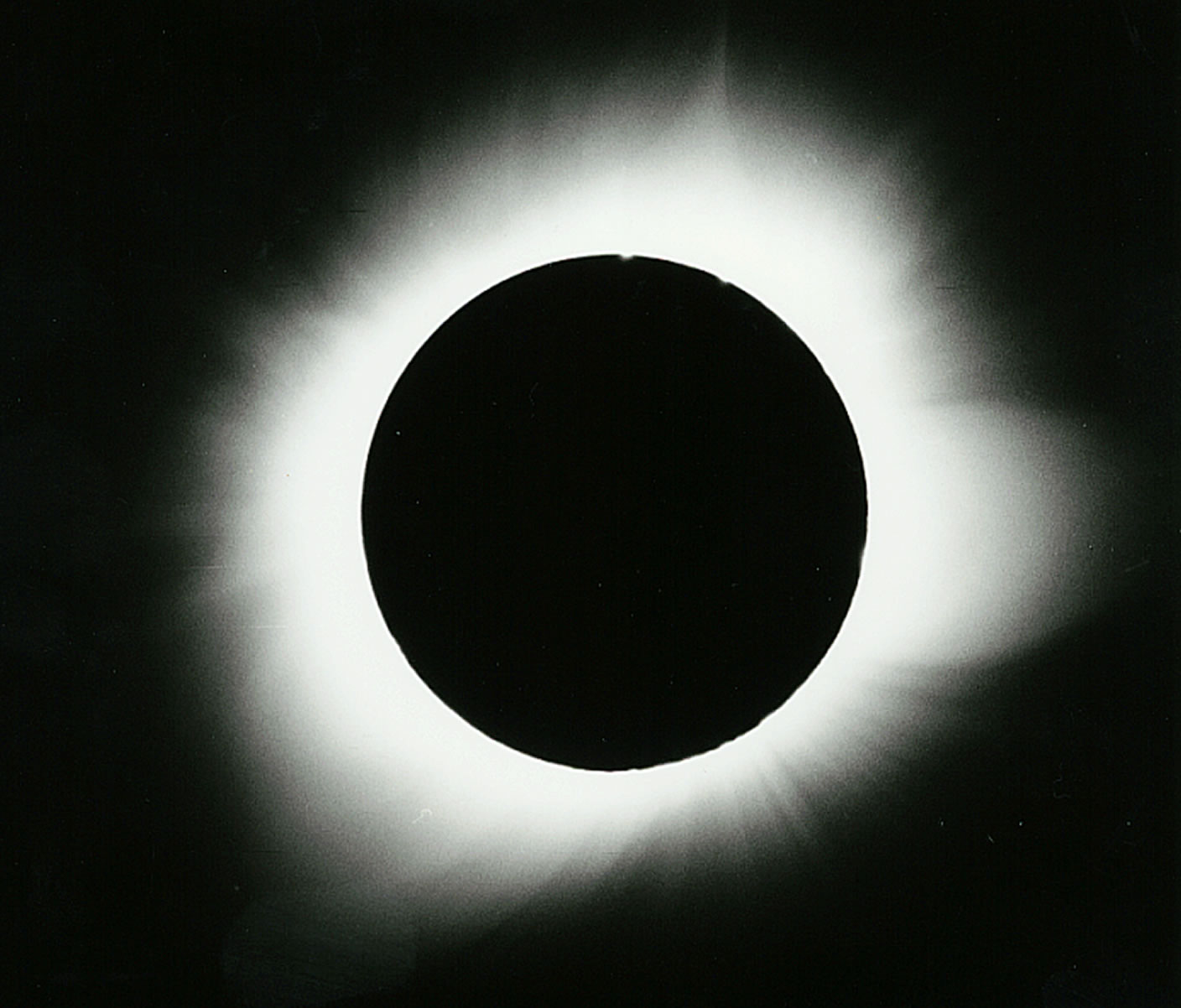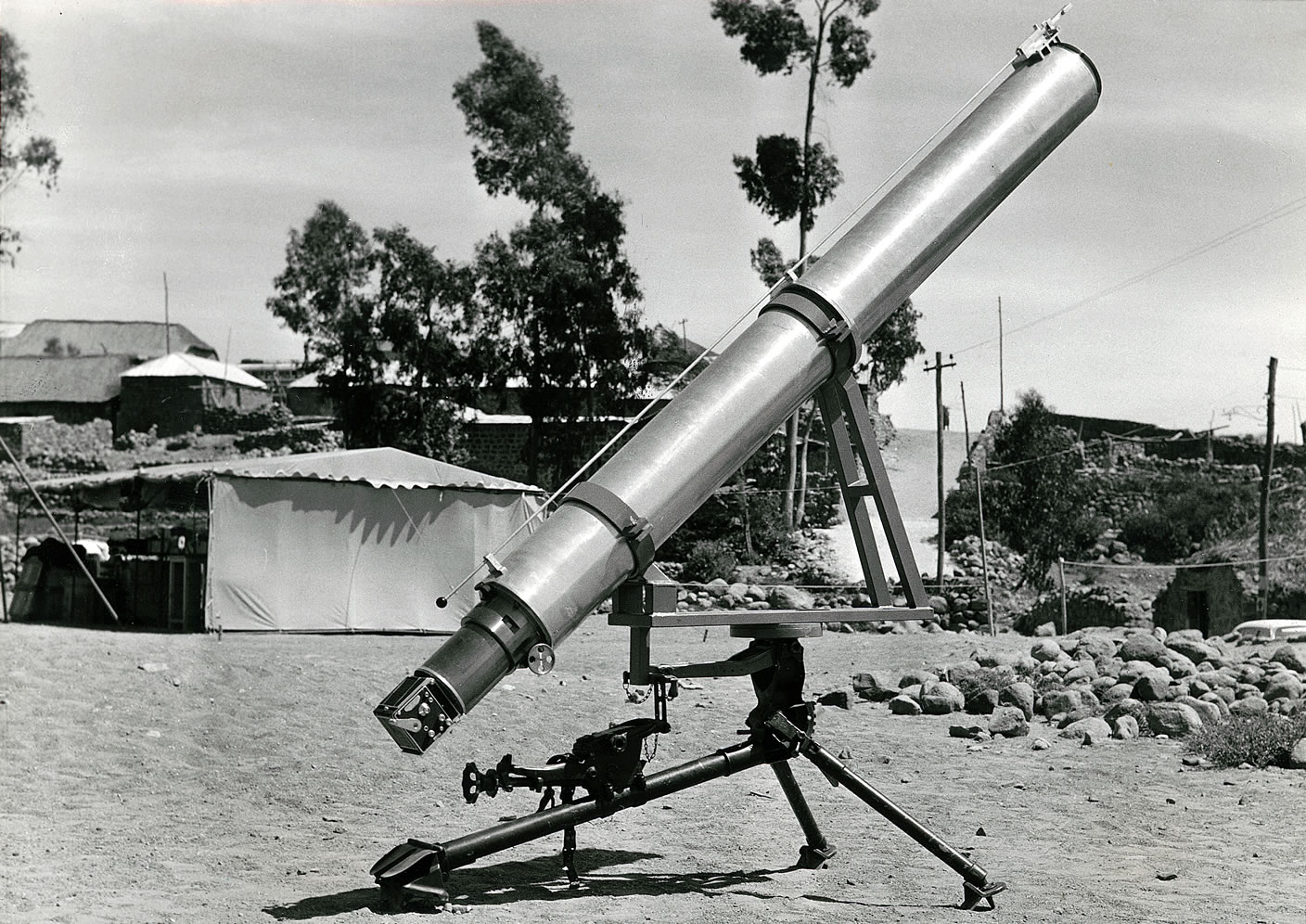Solar eclipse expeditions
The reports by external page Francis Baily on the annular solar eclipse on 15 May 1836 and the total solar eclipse on 8 July 1842 aroused interest in phenomena that had been observed at the time but not studied any further. Baily recommended that his colleagues conduct observation programmes at as many places spread across the entire expanse of the zone of totality as possible during every upcoming total solar eclipse.
His words struck a chord: experts and amateur astronomers actually began to travel all over the world to collect as much material as possible or simply marvel at the spectacle.
Alfred Wolfer's solar eclipse expedition to Guelma
The total solar eclipse on 30 August 1905 provided unusually favourable observation opportunities. It fell on a period of strong solar activity and therefore promised the prospect of interesting coronal shapes. The zone of totality stretched through Spain and North Africa, where the weather outlook at that time of year was the best and where there was a wealth of suitable observation stations.
Alfred Wolferselected the town of Guelma in the province of Constantine, Algeria for the observation site and the necessary funding from the Wolf Foundation at the Eidgenössische Sternwarte was approved by the Swiss School Board in early 1905. Wolfer limited the programme to photographs of the corona and the prominences and direct spectroscopic observations of the area around the sun's edge. His photographs revealed interesting properties of the prominences and the corona.
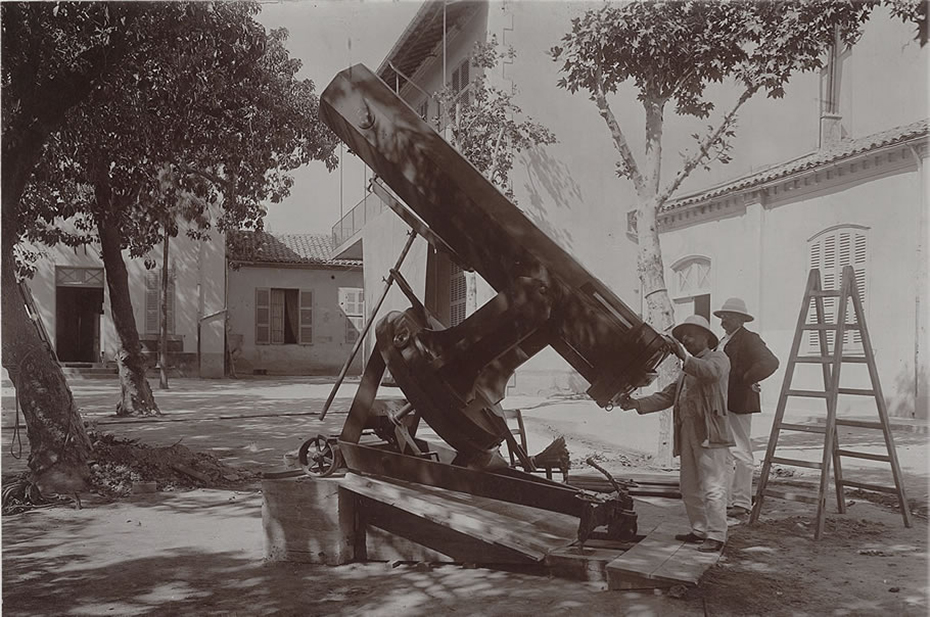
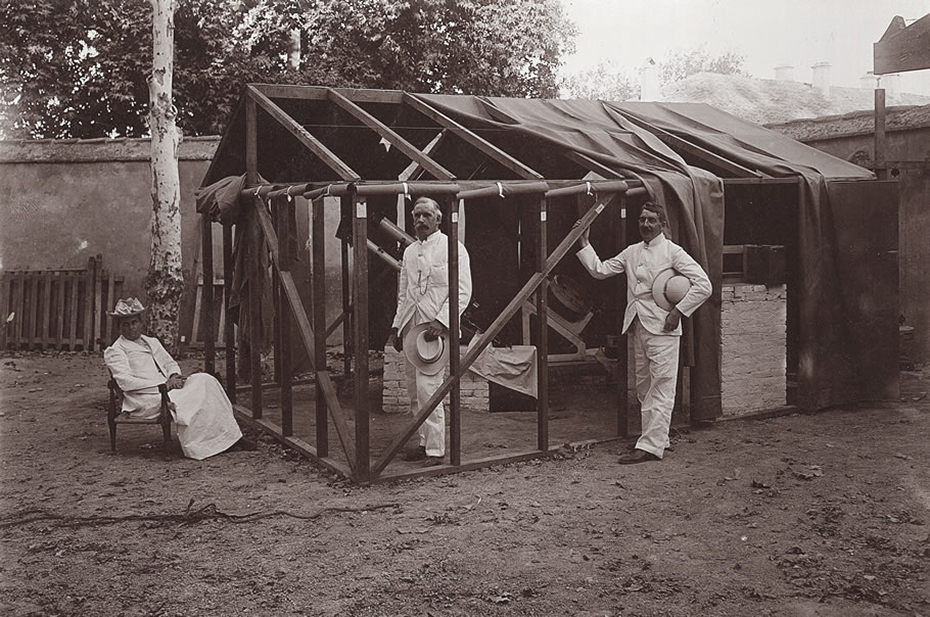
Max Waldmeier's first solar eclipse expedition
In 1949 Max Waldmeier decided to conduct an expedition to observe the solar eclipse on 25 February 1952 and complement the coronal research that had been conducted at the Astrophysical Observatory in Arosa since 1938. Around 140 kilometres wide, the zone of totality stretched from the Atlantic Ocean, through Equatorial Africa, the Belgian Congo and the Sudan up to the Red Sea, the Arabian Peninsula, Basra and through the Persian Uplands all the way to Siberia.
The Sudanese capital Khartoum was selected as the observation point and the weather outlook was very favourable: a high probability of clear skies was forecast for the day of the eclipse. In fact, this first expedition by Waldmeier, funded by the Swiss Society for Natural Sciences was a resounding success.
Image from Max Waldmeier's personal papers
 Expedition to observe the total solar eclipse on 25 February 1952 in Khartoum, Sudan
Expedition to observe the total solar eclipse on 25 February 1952 in Khartoum, Sudan
Image from Max Waldmeier's personal papers
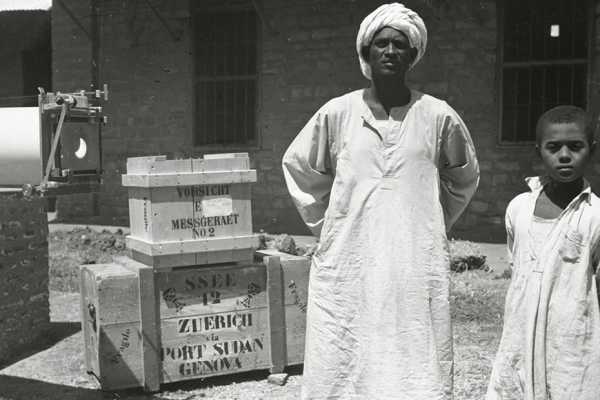 Expedition to observe the total solar eclipse on 25 February 1952 in Khartoum, Sudan
Expedition to observe the total solar eclipse on 25 February 1952 in Khartoum, Sudan
Image from Max Waldmeier's personal papers
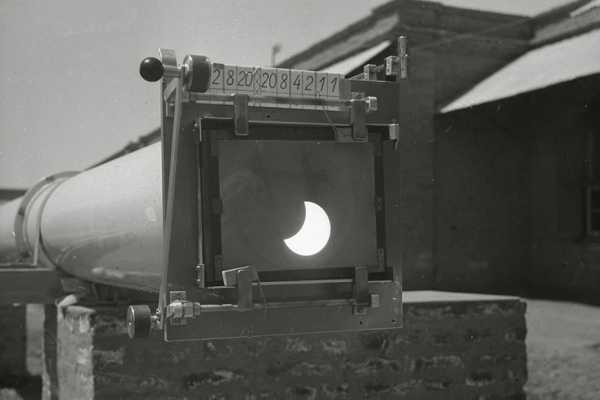
The total solar eclipse on 20 June 1955
Immediately after his successful Khartoum expedition, Waldmeier decided to conduct further expeditions. Thanks to the solar eclipses on 30 June 1954 and 20 June 1955, he did not have to wait long, either. By late 1952, a programme for observing these two solar eclipses had already been submitted to the Swiss National Foundation for the Promotion of Scientific Research with a funding application for the two expeditions. The grant, which, besides the pure cost of the expeditions, also included a substantial sum for the procurement of new instruments, was approved in full in early 1953.
The zone of totality on 20 June 1955 stretched from the Indian Ocean, through Ceylon (now Sri Lanka), the Andaman Islands, Siam (now Thailand) and Indochina to the Philippines and ended in the Pacific Ocean. Major cities such as Colombo, Bangkok and Manila were in this zone. The total eclipse was striking on account of its unusual length, which exceeded seven minutes over the Philippines. Although an in-depth study of the climate made other areas seem considerably more favourable, Polonnaruwa (near Colombo, Ceylon) was selected as the observation point.
The observation programme was heavily weighted in favour of the spectroscopic study of the corona. Packed in twenty-seven boxes weighing more than three tons, the equipment (seventeen pieces of apparatus to be operated by just four people) left Zurich on 25 March and reached Colombo on 16 April, where it was loaded onto trains to be transported on to their final destination.
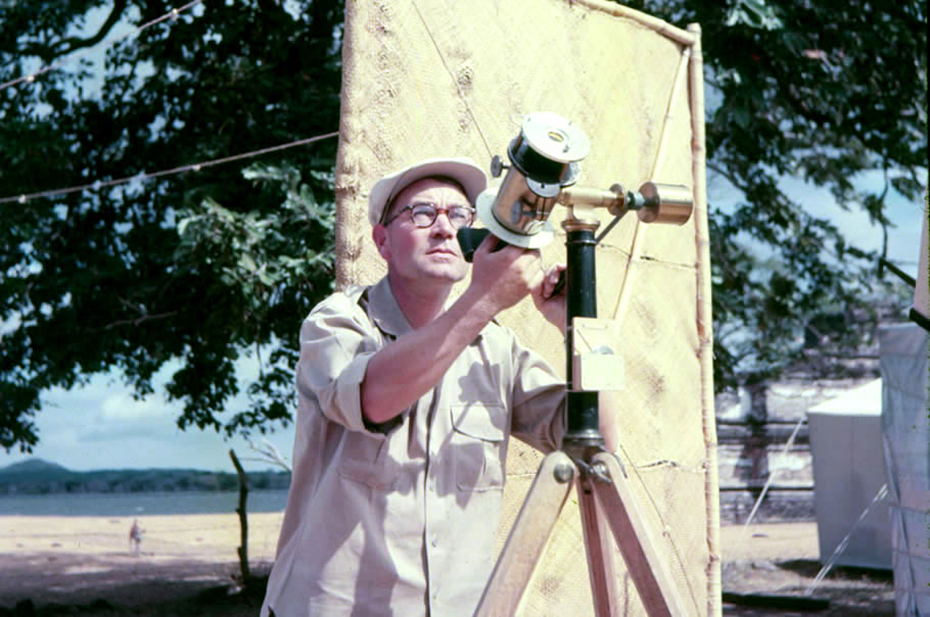
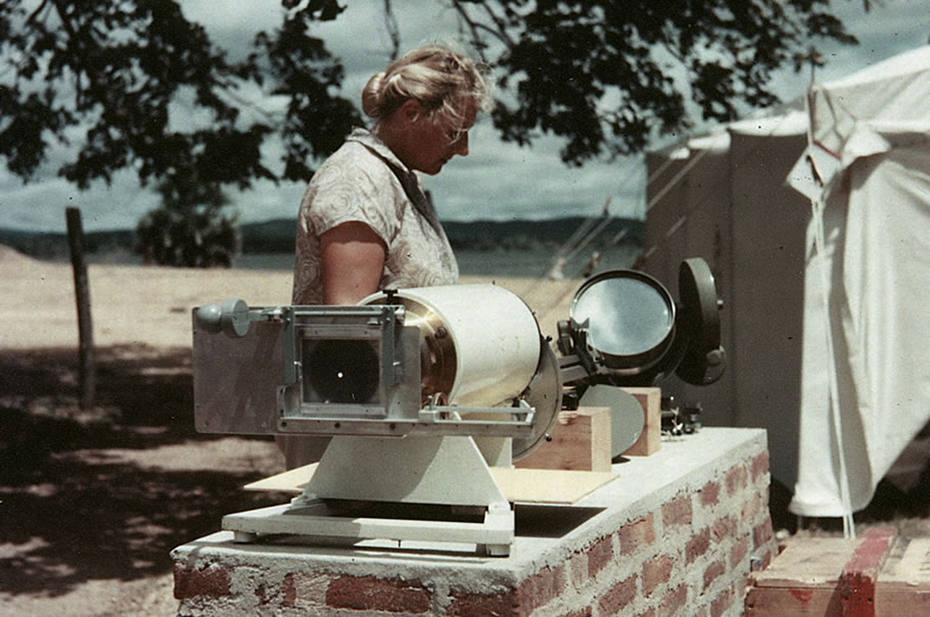
The solar eclipse expedition on 12 November 1966
The totality of the eclipse on 12 November 1966 began at a point near the Equator and reached the South American continent near Lima. The moon's shadow moved parallel to the coast towards Southern Peru, through the southern regions of Bolivia, Northern Argentina and the southern part of Brazil. The shadow left the continent south of Rio Grande, moved across the sea and left earth off the southern tip of Africa.
The maximum duration of the totality and the sun's altitude suggested Southern Brazil as the prime choice of observation point. The possibility of finding an observation site at an altitude of 3,000 to 4,000 metres in Peru or Bolivia, the fact that the cloud cover was expected to consist almost entirely of cirri in Peru and the traffic routes, however, led to the decision to observe the eclipse in the Arequipa region.
The primary aim was to clarify the physical nature of the corona, i.e. determine its density, temperature and chemical composition. The radial structure of the corona was still unclear, which is why it was targeted in the studies. The interest was mainly geared towards the system of polar beams and how it changes on the eleven-year cycle.
